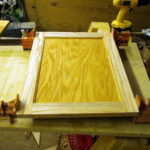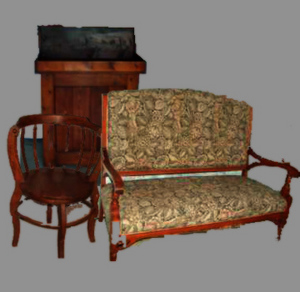A bolster cushion provides a contrast in style to other cushions in your sitting room or living room. This version is finished at each end with a gathered panel neatened with bold self-covered buttons.
Bolsters are round, elongated cushions that are typically used on beds, day beds, sofas or chaise lounges. On beds, bolsters give support to other cushions or pillows, but they can be used in their own right as very distinctive accessories for other soft furnishings round the home.
Bolsters can be covered to match or contrast with their surroundings, and are made in a range of fabrics from rich velvets to pretty broderie anglaise or coarse natural cloth.
Bolster covers can be made in several different ways. The one shown here has gathered ends that are finished with a decorative trim such as a covered button, tassel or rosette.
Bolster pads come in a range of sized from department stores.
To make your bolster cover you will need:
- Fabric of choice
- Bolster pad
- Scissors
- Zip, half length of pad
- Contrasting piping
- Matching sewing thread
- 2 self-cover buttons at least 1 ¼ inches(38mm)
1. Cutting out the body: But a piece of fabric equal to the length by the circumference of the bolster pad, plus 5/8 inches (1.5cm) seam allowance all round. Unless the bolster is exceptionally fat, the end pieces can be cut from the remaining width; if in doubt make a cutting plan before buying fabric.
2. Cutting the ends: Cut two rectangles of bolster fabric equal to the circumference by the radius, plus 5/8 inches (1.5cm) all round. These can be cut across the width or length of the fabric, depending on the way you want the patter to run.
3. Making up the body: With right sides together, fold the main piece in half lengthways. Stitch down the length of the seam, leaving an opening in the center for the zip. Hold to seam closed with tacking and press open. Center the zip face down over the seam, and tack down each side, 3/8 inch (1cm) from seam. Machine or hand stitch zip in place, stitching down each side and across both ends. Remove the tacking and turn right side out.
4. Preparing the ends: With right sides together, stitch along the short edges of each end piece, taking a 5/8 inch (1.5cm) seam allowance. Press the seams open. Turn under a 5/8 inch (1.5cm) hem on one long edge of each end piece and press. Using strong thread work two rows of gathering stitches by hand or machine close to the pressed edges.
5. Adding the piping: Cut two lengths of contrast piping, each long enough to fit round the circumference of the bolster, plus 1 ½ inches (4cm) for joining. Pin and tack the piping round both ends of the main body, matching the raw edges together, and butt join the ends. Stitch in place using a zipper foot.
6. Attaching the ends: Slip an end piece over one end of the main body tube, with right sides together and matching raw edges. Pin, tack and stitch, using zipper foot. Clip and grade seam allowances, and press them towards the end. Repeat to attach the other end piece.
7. Finishing the ends: Insert the bolster pad through one end of the cover so its ends align with the piping. Gather at one end and fasten the threads. Repeat at the other end. Cover two self-cover buttons, following manufacturer’s instructions, and stitch over gathers at each end.




